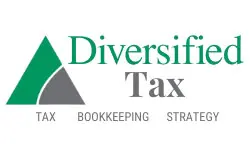Ways to Reduce Your Tax Bill With Retirement Accounts
Table of Contents
Ways to Reduce Your Tax Bill With Retirement Accounts
Taxes can be a significant expense for many individuals, and finding ways to reduce your tax bill is always a welcome relief. One effective way to do this is by investing in retirement accounts such as 401(k)s, IRAs, and HSAs. These accounts not only offer a secure and reliable way to save for retirement, but they also come with tax benefits that can help reduce your tax bill. By contributing to these accounts, you can lower your taxable income and potentially save thousands of dollars in taxes each year.
Understanding tax-deferred retirement accounts
When it comes to retirement accounts, the most common types are 401(k)s, IRAs, and HSAs. These accounts are considered tax-deferred, which means that your contributions are made with pre-tax dollars, and any earnings on those contributions are tax-free until you withdraw them in retirement. This provides a significant advantage over regular savings accounts, where you pay taxes on your earnings each year.
Investing in tax-deferred accounts such as 401(k)s, IRAs, and HSAs is an excellent way to reduce your tax bill while saving for the future. The money you contribute to these accounts is taken out of your paycheck before taxes are withheld, which lowers your taxable income. This can result in significant tax savings each year, depending on how much you contribute.
What is a 401(k) and how does it work?
A 401(k) is a type of retirement account offered by many employers. It allows employees to contribute a portion of their pre-tax income to the account, where it can grow tax-free until retirement. Employers may also offer a matching contribution, which means that they will match a certain percentage of the employee’s contribution to the account.
One of the significant benefits of a 401(k) is that contributions are tax-deductible, which means that they lower your taxable income. This can result in significant tax savings each year, depending on how much you contribute. Additionally, the money in a 401(k) grows tax-free until you withdraw it in retirement, which can help your savings grow faster.
The benefits of contributing to a 401(k)
Contributing to a 401(k) has several benefits, including tax savings and employer matching contributions. Here are some of the key advantages of investing in a 401(k):
- Tax savings: As mentioned earlier, contributing to a 401(k) can lower your taxable income, resulting in significant tax savings each year.
- Employer matching contributions: Many employers offer a matching contribution to their employees’ 401(k) accounts. This means that they will match a certain percentage of the employee’s contribution, up to a certain limit. This is essentially free money that can help your retirement savings grow faster.
- Investment options: 401(k) plans typically offer a range of investment options, including mutual funds, index funds, and target-date funds. This allows you to choose the investment strategy that best fits your risk tolerance and financial goals.
What is an IRA and how does it work?
An IRA, or individual retirement account, is a type of retirement account that is not tied to an employer. This means that you can open an IRA on your own, regardless of whether or not you have a job that offers a retirement plan. There are two main types of IRAs: traditional IRAs and Roth IRAs.
Like a 401(k), contributions to a traditional IRA are tax-deductible, which means that they lower your taxable income. However, unlike a 401(k), there are income limits on who can contribute to a traditional IRA. Additionally, the money in a traditional IRA grows tax-free until you withdraw it in retirement, at which point it is taxed as ordinary income.
On the other hand, contributions to a Roth IRA are made with after-tax dollars, which means that they do not lower your taxable income. However, the money in a Roth IRA grows tax-free, and withdrawals in retirement are tax-free as well.
The benefits of contributing to an IRA
Contributing to an IRA has several benefits, including tax savings and flexible contribution options. Here are some of the key advantages of investing in an IRA:
- Tax savings: Like a 401(k), contributing to a traditional IRA can lower your taxable income, resulting in significant tax savings each year.
- Flexible contribution options: With an IRA, you can contribute up to a certain amount each year, regardless of whether or not your employer offers a retirement plan. Additionally, you can choose between a traditional IRA or a Roth IRA, depending on your tax situation and financial goals.
- Investment options: IRAs offer a range of investment options, including mutual funds, index funds, and individual stocks and bonds. This allows you to choose the investment strategy that best fits your risk tolerance and financial goals.
What is an HSA and how does it work?
An HSA, or health savings account, is a type of account that allows you to save money for medical expenses. It is only available to individuals who have a high-deductible health plan (HDHP), which is a type of health insurance plan that has a high deductible and low premiums.
Contributions to an HSA are tax-deductible, which means that they lower your taxable income. Additionally, the money in an HSA grows tax-free, and withdrawals for qualified medical expenses are also tax-free. This makes an HSA an excellent way to save for medical expenses while also reducing your tax bill.
The benefits of contributing to an HSA
Contributing to an HSA has several benefits, including tax savings and the ability to save for future medical expenses. Here are some of the key advantages of investing in an HSA:
- Tax savings: Like a 401(k) and an IRA, contributions to an HSA are tax-deductible, which means that they lower your taxable income. This can result in significant tax savings each year.
- Ability to save for future medical expenses: An HSA is an excellent way to save for future medical expenses, such as deductibles, copayments, and prescription drugs. This can help you avoid dipping into your regular savings or retirement accounts to pay for unexpected medical bills.
- Investment options: Many HSA providers offer a range of investment options, including mutual funds and index funds. This allows you to choose the investment strategy that best fits your risk tolerance and financial goals.
Tax-saving strategies for retirement accounts
To maximize the tax benefits of retirement accounts, it’s essential to understand the contribution limits and eligibility requirements. Here are some tax-saving strategies to consider when investing in retirement accounts:
- Contribute the maximum amount: Each retirement account has a maximum contribution limit, which can change from year to year. To maximize your tax savings, try to contribute the maximum amount allowed each year.
- Take advantage of employer matching contributions: If your employer offers a matching contribution to your retirement account, make sure to contribute enough to take full advantage of this benefit.
- Choose the right retirement account: Depending on your income, tax situation, and financial goals, some retirement accounts may be more beneficial than others. Consider talking to a financial advisor to help you choose the right retirement account for your needs.
Conclusion
Investing in retirement accounts such as 401(k)s, IRAs, and HSAs is an excellent way to reduce your tax bill while saving for the future. These accounts offer significant tax benefits, including the ability to lower your taxable income and grow your savings tax-free. By understanding the different types of retirement accounts and tax-saving strategies, you can optimize your retirement savings and keep more of your hard-earned money. Whether you’re just starting to save for retirement or looking for ways to optimize your tax strategy, investing in retirement accounts is a smart financial decision that can pay off in the long run.




